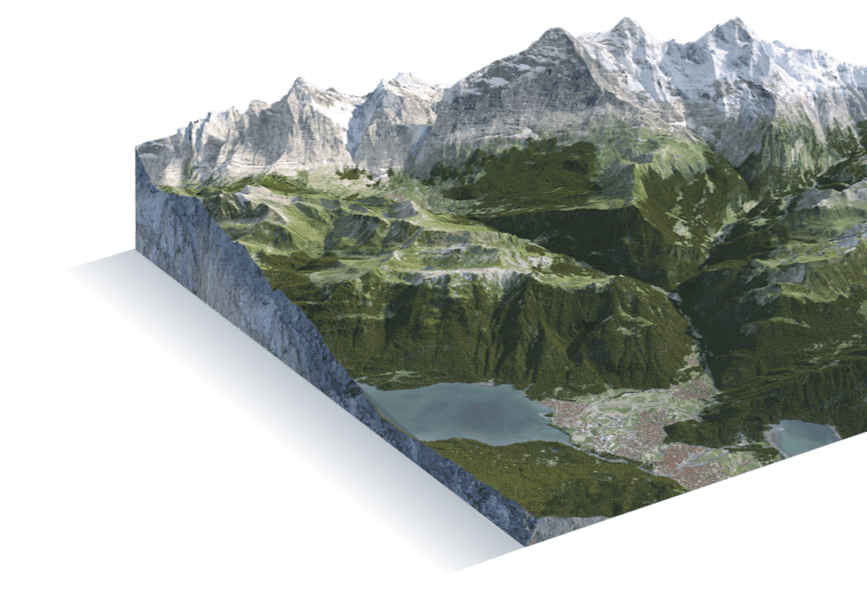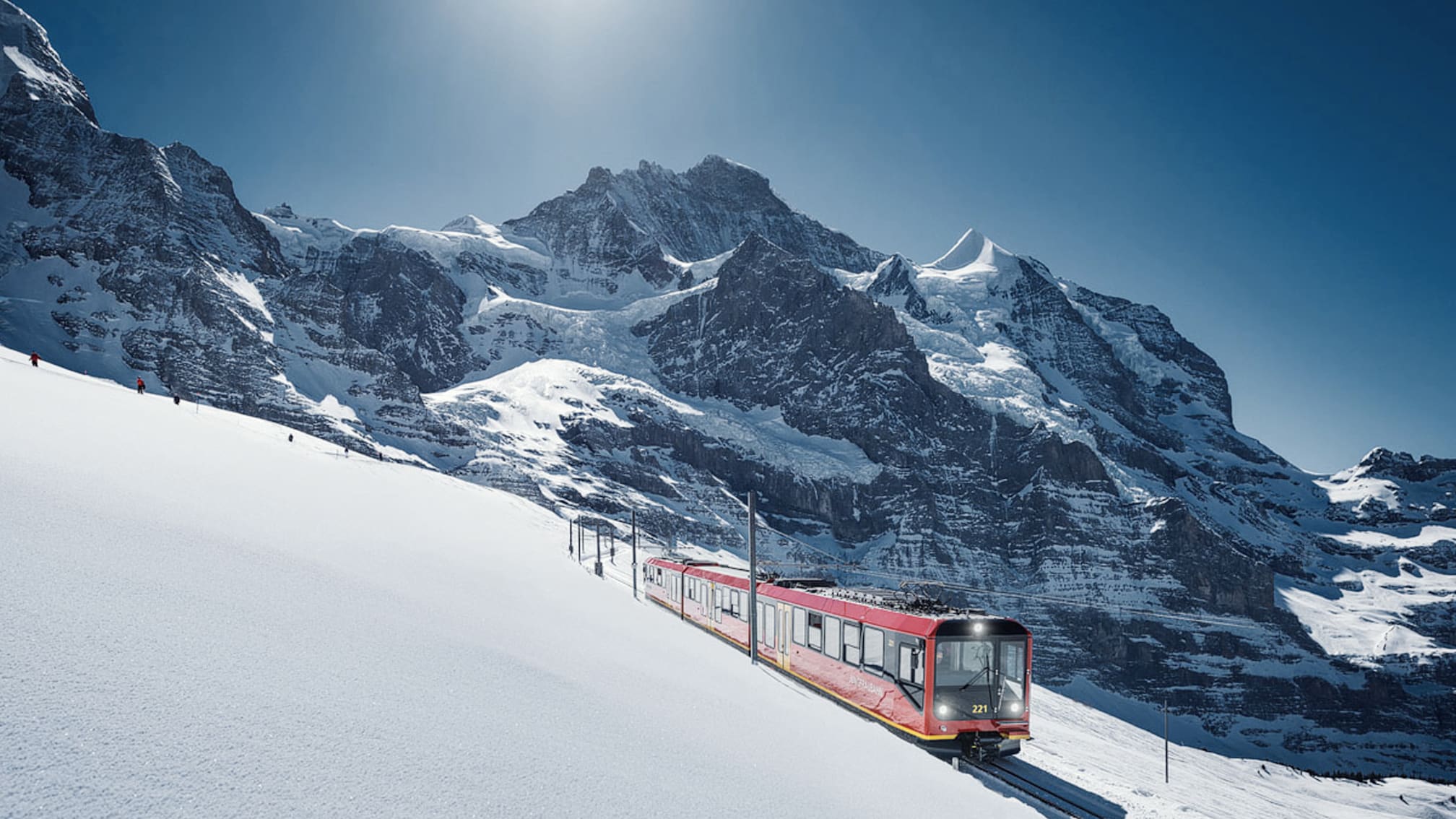The founders of the funicular, inaugurated in 1908, to the Harder Observatory, used electricity from the very beginning. And they took the landscape into consideration: The 1,447 metre long track of the Harderbahn does not lead straight into Harder Kulm; instead, it traces an arc. From the valley, the track that is inclined up to 64 per cent is therefore hardly visible. All the more impressive is the view through the glass roof of the panorama cars: At first, only the peaks of the Eiger, Mönch and Jungfrau are visible, but the peaks "grow" with each of the 755 metres that are passed.



